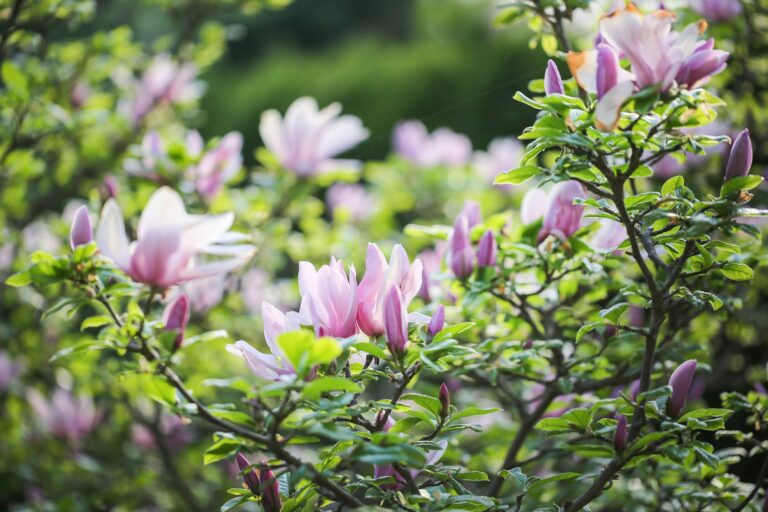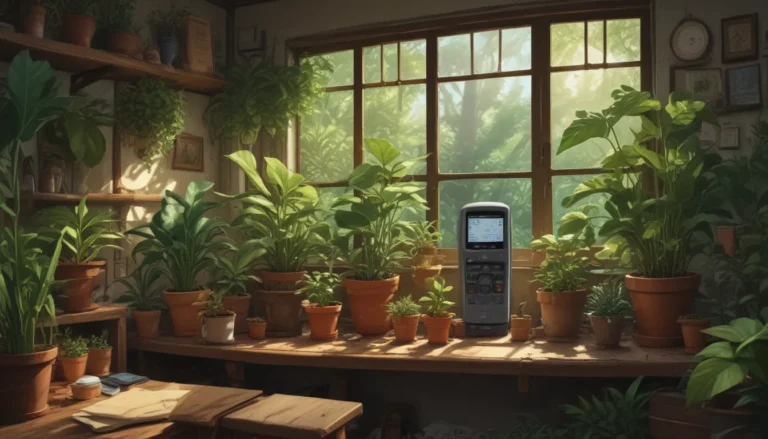Your Ultimate Guide to Growing and Caring for Gopher Plants

Meet Euphorbia rigida
Gopher plant, scientifically known as Euphorbia rigida, is a stunning evergreen plant known for its gray-blue lance-shaped leaves, chartreuse bracts, and bright yellow flowers. Unlike its uninspiring rodent namesake, the gopher plant is a beautiful addition to any garden.
Originally from southern Europe, the Middle East, and southwest Asia, gopher plants have found a welcoming home in North America, particularly in USDA Hardiness Zones 7 to 10. Despite being considered a weed in some areas, this tough little evergreen has gained popularity as an ornamental plant.
If you’re looking for a low-maintenance, visually striking plant for your garden, the gopher plant is an excellent choice. Whether you need a container plant, a rock garden specimen, or a xeriscape filler, the gopher plant fits the bill.
Known by various aliases such as upright myrtle spurge, silver spurge, and even milkweed, Euphorbia rigida is a versatile plant that can adapt to different growing conditions. Let’s delve deeper into how you can successfully grow and care for these resilient plants.
What You’ll Learn
- Cultivation and History
- Propagation
- How to Grow
- Growing Tips
- Maintenance
- Varieties to Select
- Managing Pests and Disease
- Best Uses
- Quick Reference Growing Guide
Cultivation and History
Native to southern Europe, the Middle East, and southwest Asia, gopher plants have also naturalized in regions like southern California. In North America and Europe, they are cherished ornamentals for xeriscaping and rocky gardens. These plants belong to the Euphorbiaceae family and attract bees with their vibrant yellow springtime flowers.
Gopher plants have an interesting growth habit, ranging from shrubby and upright to sprawling and ground-cover-like. They thrive in well-drained soil types such as sand, loam, or chalk, making them ideal for rock gardens or beds with pebble mulch. Optimum growth conditions include full sun, but they can also tolerate partial sun.
Gopher Plant Propagation
While Euphorbia rigida seeds are not commercially available due to their short shelf life, the plant self-seeds easily. Propagating gopher plants from cuttings is a common method. By taking stem cuttings in the spring or summer and following specific planting and care instructions, you can grow new plants successfully.
Dividing mature gopher plants is another method to propagate them. As the plants age, they spread, allowing you to separate clumps and regenerate them. This process is essential as gopher plants have a relatively short lifespan.
Transplanting
If you’re lucky enough to find gopher plants at a local nursery, transplanting them is a straightforward process. Choose a suitable location with well-drained soil, dig a hole, gently remove the plant from its container, and plant it at the same depth as the container or previous growing depth.
How to Grow Gopher Plants
Gopher plants are low-maintenance and thrive in full sun, well-drained soil. They are drought-tolerant and do not require regular watering. Supplemental water may be needed during extended dry periods, but avoid overwatering to prevent root rot.
If you choose to grow gopher plants in containers, ensure proper drainage and use a succulent-specific potting medium. Water only when the soil has dried out completely, and consider feeding with a mild, balanced fertilizer to boost growth.
Managing Pests and Disease
Gopher plants are resilient to pests and diseases, with their sap repelling deer, rodents, and other pests. However, red spider mites can be a concern, especially in hot, dry conditions. Regular monitoring and appropriate treatment measures can help control pest infestations.
While gopher plants are generally disease-resistant, factors like poor drainage or excessive moisture can lead to issues like powdery mildew and root rot. Preventative measures such as proper planting techniques and timely interventions can help maintain plant health.
Best Uses for Gopher Plants
Gopher plants are versatile ornamental plants suitable for various gardening applications. Whether you need a carefree container plant, a rock garden specimen, or a xeric landscape filler, Euphorbia rigida is an excellent choice. Its striking appearance and low-maintenance requirements make it a popular option for gardeners.
Quick Reference Growing Guide
- Plant Type: Evergreen spurge
- Flower/Foliage Color: Yellow/green
- Native to: Europe, Middle East, Southwest Asia
- Hardiness (USDA Zones): 7-10
- Maintenance: Low
- Tolerance: Drought, frost
- Bloom Time: Spring blossom, evergreen leaves
- Soil Type: Sandy, loamy
- Exposure: Full to partial sun
- Soil pH: 6.0-8.5
- Time to Maturity: 2-5 years
- Soil Drainage: Well-draining
- Spacing: 18 inches
- Height: 2 feet
- Spread: 3 feet
- Water Needs: Low
- Growth Rate: Moderate
The Perfect Plant for Challenging Spots
Euphorbia rigida, or gopher plant, is a visually appealing and low-maintenance addition to any garden. With its vibrant colors, resilient nature, and versatile growth habits, gopher plants are well-suited for xeriscaped landscapes, rock gardens, and other challenging spots in your garden.
Have you considered adding E. rigida to your garden after learning more about it? How do you envision using this plant in your landscape? Share your thoughts in the comments below.
Now that you’ve mastered the art of growing and caring for gopher plants, you may want to explore other xeric plants for your garden. Check out our guides on Crassula succulents, Yucca plants, and Sedum (Stonecrop) for more gardening inspiration.
Sources:
– Original article by Gretchen Heber, published on April 18, 2018
– Last updated June 28, 2023





